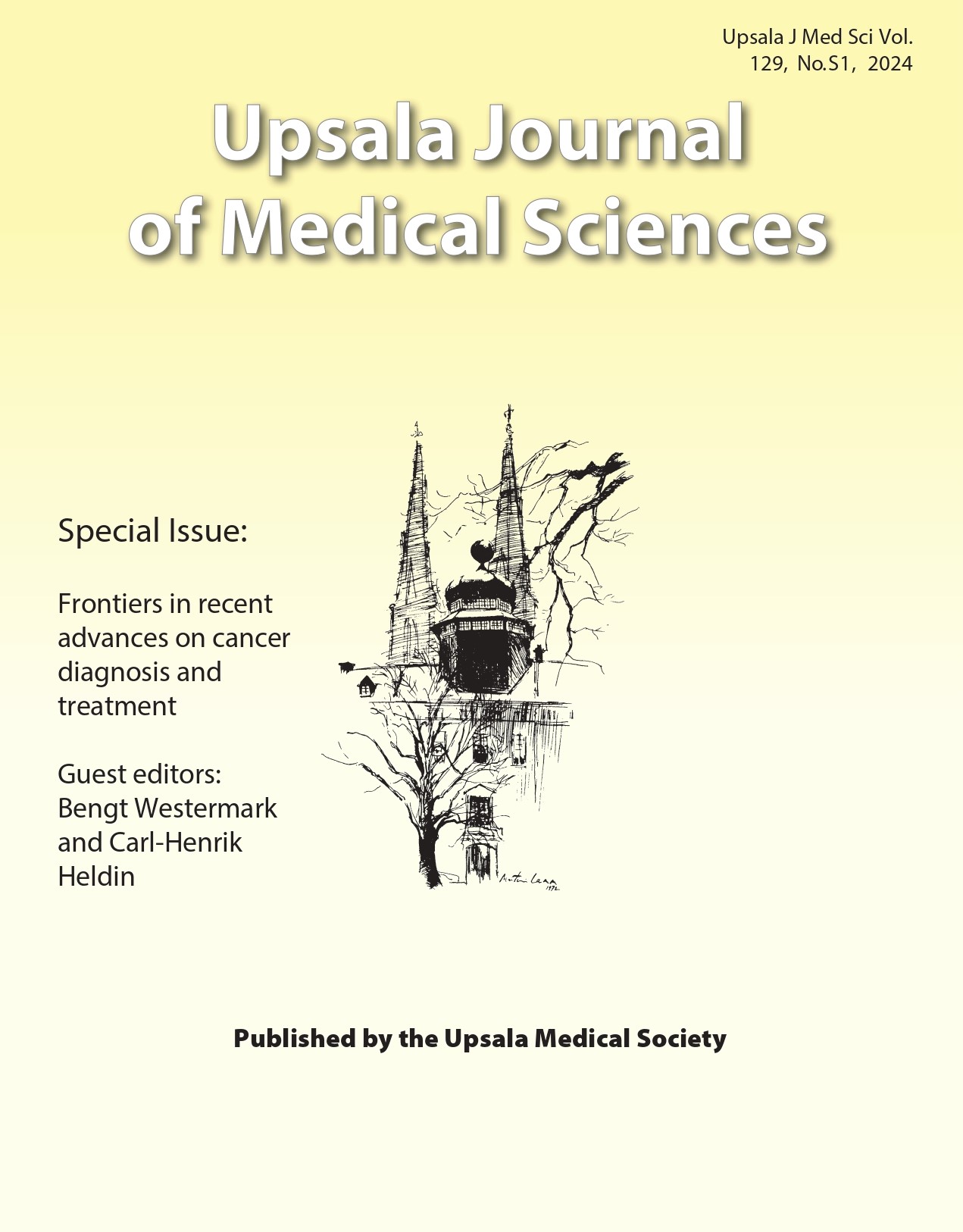Special issue: frontiers in recent advances on cancer diagnosis and treatment
Abstract
‘Of all the processes that the student of pathology is privileged to study, none is as intriguing, fascinating, and perplexing as neoplasia.’
This statement, a quote from William Boyd’s Textbook of Pathology (1961), remains as thought-provoking today as when it was first written. Over the decades since Boyd penned these words, our understanding of the molecular mechanisms underlying tumorigenesis and the development of novel therapeutic approaches have advanced at a revolutionary pace. This special issue of UJMS on cancer exemplifies the remarkable progress in cancer research, reaffirming that Boyd’s perspective on the enigmatic nature of cancer endures.
Downloads
References
2. Hanahan D, Weinberg RA. Hallmarks of cancer: the next generation. Cell. 2011;144:646–74. doi: 10.1016/j.cell.2011.02.013
3. Strandgren C, Wiman KG. Therapeutic targeting of TP53 nonsense mutations in cancer. Ups J Med Sci. 2024;129:e10719. doi: 10.48101/ujms.v129.10719
4. Andersson L. White horses – non-coding sequences drive premature hair greying and predisposition to melanoma. Ups J Med Sci. 2024;129:e10626. doi: 10.48101/ujms.v129.10626
5. Rodrigues-Junior DM, Moustakas A. Unboxing the network among long non-coding RNAs and TGF-beta signaling in cancer. Ups J Med Sci. 2024;129:e10614. doi: 10.48101/ujms.v129.10614
6. Pietras K, Sjolund J. Cellular plasticity in the breast cancer ecosystem. Ups J Med Sci. 2024;129:e10629. doi: 10.48101/ujms.v129.10629
7. Milosevic V, Ostman A. Interactions between cancer-associated fibroblasts and T-cells: functional crosstalk with targeting and biomarker potential. Ups J Med Sci. 2024;129:e10710. doi: 10.48101/ujms.v129.10710
8. Badillo O, Helfridsson L, Niemi J, Hellstrom M. Exploring dendritic cell subtypes in cancer immunotherapy: unraveling the role of mature regulatory dendritic cells. Ups J Med Sci. 2024;129:e10627. doi: 10.48101/ujms.v129.10627
9. Sjoberg E. Molecular mechanisms and clinical relevance of endothelial cell cross-talk in clear cell renal cell carcinoma. Ups J Med Sci. 2024;129:e10632. doi: 10.48101/ujms.v129.10632
10. Glimelius B. Recent advances in rectal cancer treatment – are we on the right track? Ups J Med Sci. 2024;129:e10537. doi: 10.48101/ujms.v129.10537
11. Falkman L, Sundin A, Skogseid B, Botling J, Bernardo Y, Wallin G, et al. Genetics-guided therapy in neuroendocrine carcinoma: response to BRAF- and MEK-inhibitors. Ups J Med Sci. 2024;129:e10660. doi: 10.48101/ujms.v129.10660
12. Szulzewsky F, Thirimanne HN, Holland EC. Meningioma: current updates on genetics, classification, and mouse modeling. Ups J Med Sci. 2024;129:e10579. doi: 10.48101/ujms.v129.10579
13. Takahashi-Yamashiro K, Miyazono K. Tissue clearing method in visualization of cancer progression and metastasis. Ups J Med Sci. 2024;129:e10634. doi: 10.48101/ujms.v129.10634

This work is licensed under a Creative Commons Attribution 4.0 International License.
Authors retain copyright of their work, with first publication rights granted to Upsala Medical Society. Read the full Copyright- and Licensing Statement.








